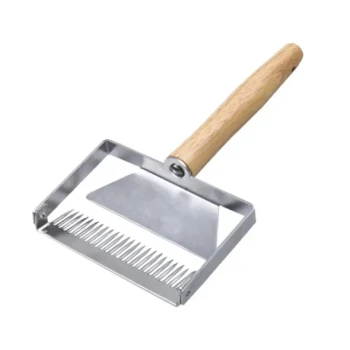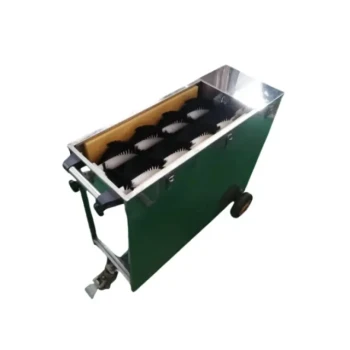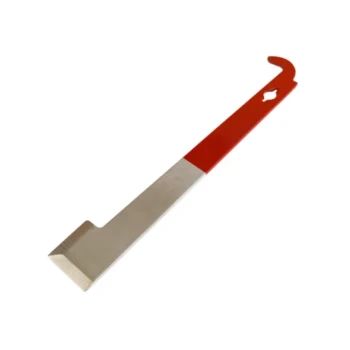To feed dry pollen to bees, you use an open feeding method. This involves placing the dry pollen powder or granules in a feeder outside and near the hives, allowing the bees to find it and gather it as they would from natural flowers. The feeder must be protected from rain and moisture to prevent spoilage.
The core decision isn't just how to feed pollen, but why. Feeding dry pollen externally is simple and mimics natural foraging, while feeding pollen patties internally gives you precise control over which colonies receive nutrition, especially when building them up for the season.
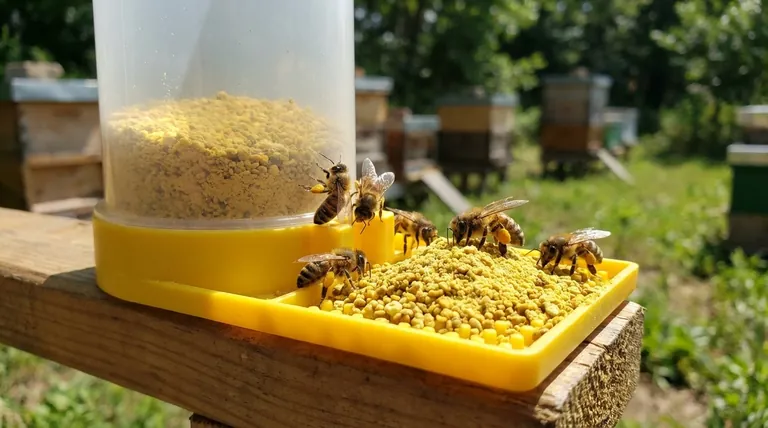
Why Supplement with Pollen?
Pollen is the primary source of protein, vitamins, and minerals for a honey bee colony. Supplementing their diet is a critical management technique for specific, strategic goals.
Stimulating Early Brood Rearing
Providing a protein source in late winter or early spring signals to the queen that resources are abundant. This encourages her to begin laying eggs, building the colony's population in time for the main spring nectar flow.
Supporting Colonies During a Dearth
Sometimes, there is a gap in the season when flowers are not producing pollen, known as a dearth. Supplemental feeding ensures the colony has the protein needed to continue raising brood and maintain its strength.
Natural Pollen vs. Pollen Substitute
While natural pollen is the ideal food, it can be expensive and carries a risk of transmitting diseases if not sourced from a reputable supplier. For this reason, many beekeepers use high-quality, protein-rich pollen substitutes, which are often soy-based and provide a safe, effective alternative.
The Two Core Feeding Methods
Your choice of feeding method directly impacts control, labor, and how the bees consume the supplement.
The Dry Feeding Method (Open Feeding)
This is the method for feeding dry pollen or substitute. The powder is placed in a container, such as a bucket on its side or a bird bath, located a short distance from the apiary.
Bees will find the powder, pack it onto their hind legs just like natural pollen, and carry it back to the hive. It's a "community cafeteria" approach that is simple to set up.
The Patty Feeding Method (Internal Feeding)
In this method, pollen or substitute is mixed with sugar syrup or honey to form a moist, doughy pollen patty.
These patties are placed directly inside the hive on top of the frames. This method acts as a targeted meal delivery, ensuring a specific colony gets the nutrition. A small wooden rim, or shim, is often needed to create space for the patty under the inner cover.
Understanding the Trade-offs
Neither method is universally superior; they serve different purposes and come with distinct advantages and disadvantages.
Control and Consumption
Patties offer maximum control. You know exactly which hive is consuming the supplement and can monitor its intake.
Dry feeding offers very little control. Stronger hives may hoard the resource, and you could be feeding bees from neighboring apiaries or wild insects.
Simulating Natural Behavior
Dry feeding encourages the bees' natural foraging instincts. They must actively leave the hive, collect the powder, and process it.
Patties are placed directly in the hive, requiring no foraging. This is less natural but more direct.
Weather and Accessibility
Dry feeders are vulnerable to weather. Rain or even heavy dew can ruin the powder, making it unusable for the bees.
Patties are protected inside the hive. Bees can access them 24/7, regardless of whether conditions are suitable for flying.
Risk of Pests
Open feeders can attract other animals and insects. Patties, if left in the hive for too long, can encourage pests like small hive beetles.
Making the Right Choice for Your Goal
Select your method based on your primary objective for the apiary.
- If your primary focus is maximum, controlled buildup of specific colonies: Use pollen patties placed directly inside the hive.
- If your primary focus is simple, low-effort support during a minor pollen dearth: Use the dry open feeding method.
- If your primary focus is supporting a large number of hives with minimal intrusions: Dry open feeding is often the most practical and time-efficient choice.
By matching the feeding method to your goal, you provide the right nutritional support at the right time, ensuring your colonies are strong and productive.
Summary Table:
| Feeding Method | Best For | Key Consideration |
|---|---|---|
| Dry Open Feeding | Low-effort support during pollen dearth | Vulnerable to rain; may attract other insects |
| Patty Feeding | Controlled colony buildup | Requires hive space; monitor for pests |
Ready to strengthen your apiary with the right feeding supplies?
HONESTBEE provides commercial apiaries and beekeeping equipment distributors with high-quality pollen substitutes and durable feeders designed for efficient open feeding. Our wholesale-focused operations ensure you get reliable equipment to support your colonies' nutritional needs, whether you're stimulating brood rearing or managing seasonal dearths.
Contact HONESTBEE today to discuss your bulk supply needs and keep your bees thriving!
Visual Guide
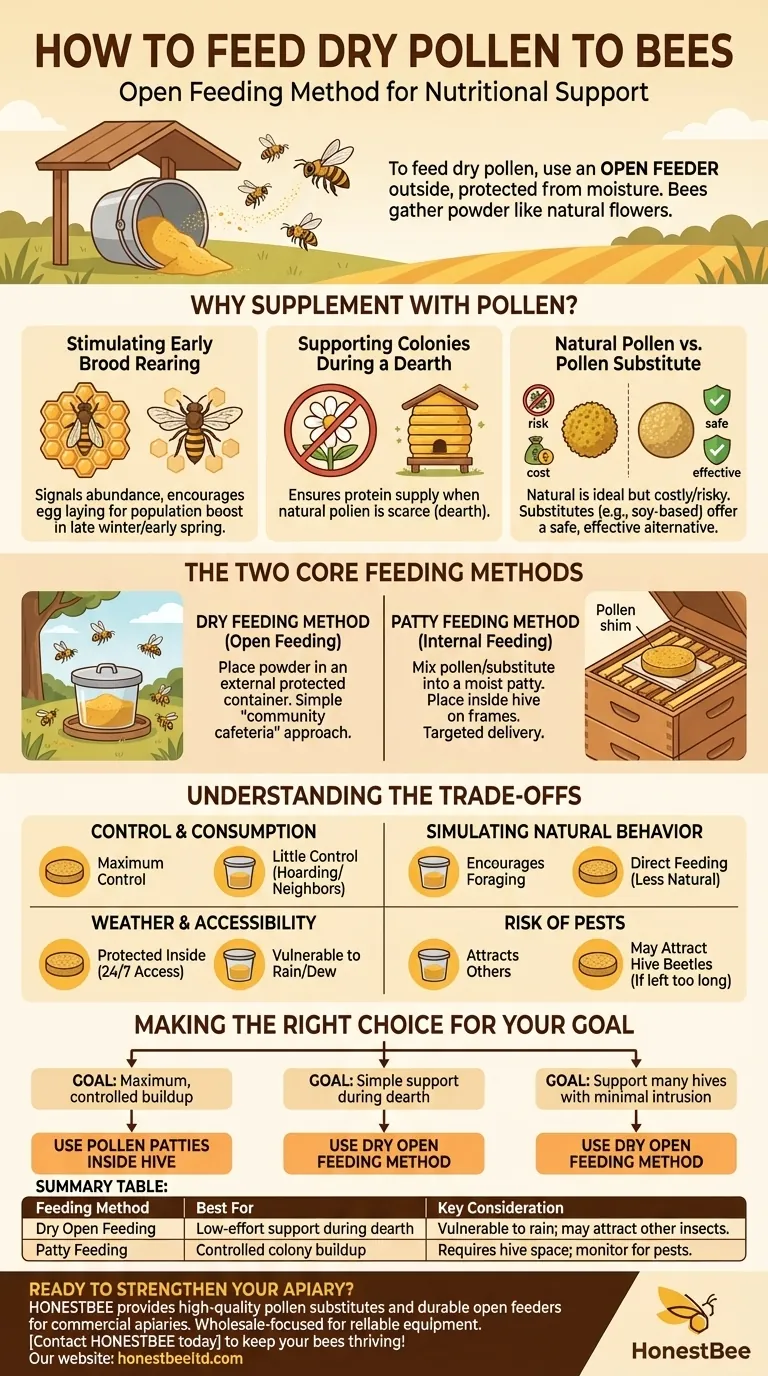
Related Products
- HONESTBEE Professional Entrance Bee Feeder Hive Nutrition Solution
- Professional Hive Front Entrance Bee Feeder
- Manual Hand Crank 4 Frame Honey Extractor Centrifuge for Beekeeping
- Ventilated Adult Beekeeping Helmet Hat for Beekeepers
- Extra Wide Stainless Steel Honey Uncapping Fork with Scraper Beekeeping Tool
People Also Ask
- What precautions should be taken when feeding bees inside the hive? Safeguard Your Colony from Robbing and Leaks
- What types of bee feeders are available for beginners? Start with the Simple Entrance Feeder
- What are the different types of honey bee feeders? Choose the Right Feeder for Your Hive
- How does the entrance feeder method work? A Guide to Simple But Risky Hive Feeding
- Are entrance feeders good for bees? Prioritize Hive Health Over Convenience




